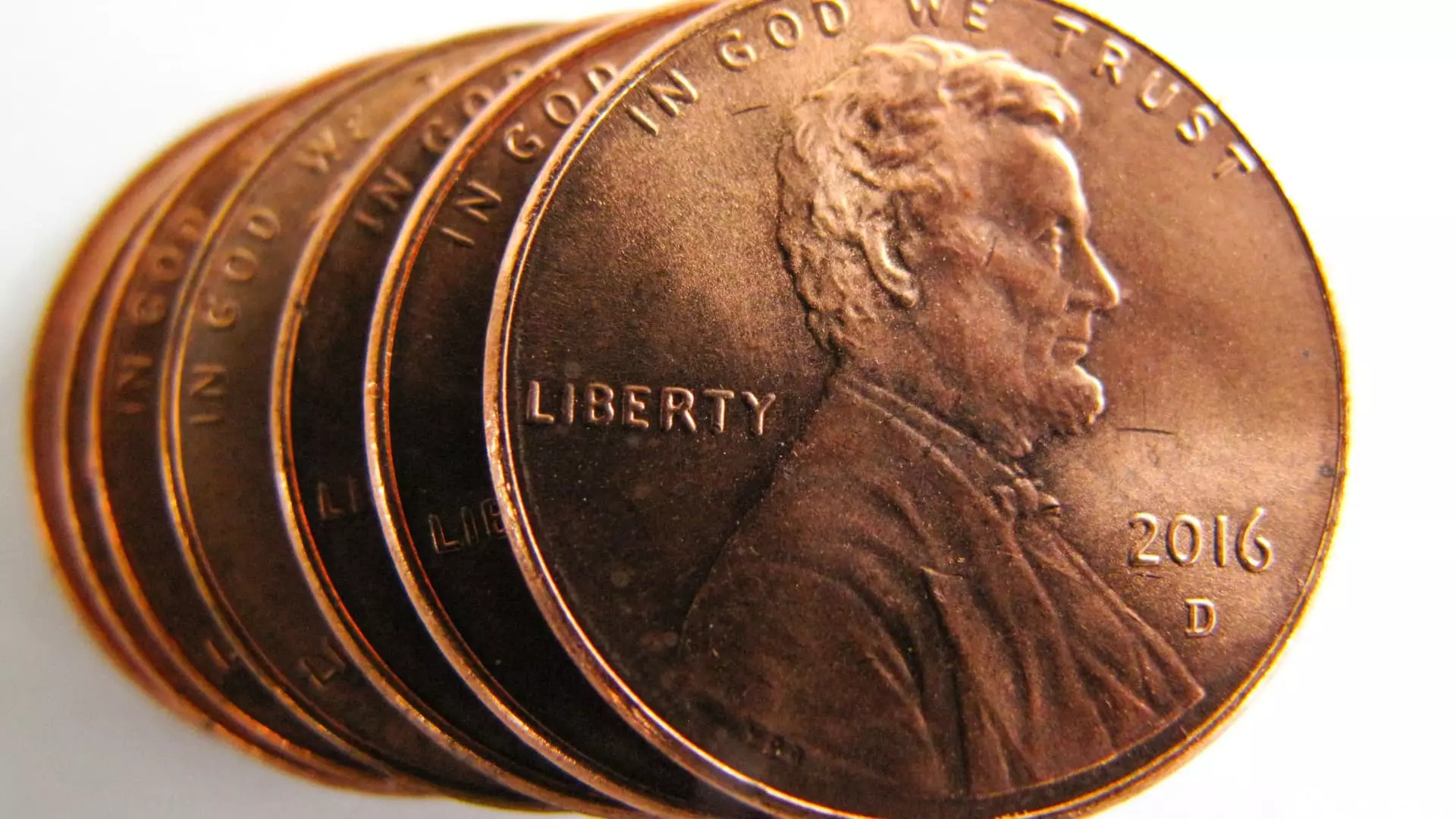The U.S. penny, once a quintessential American coin, now stands as a glaring symbol of fiscal mismanagement and inefficiency. As the price of producing the cent continues to exceed its actual value, the decision by the U.S. Treasury to cease production marks a pivotal moment in economic pragmatism. By recognizing that minting pennies costs taxpayers significantly more than their worth—almost four times as much, according to estimates—the government is finally confronting a longstanding financial absurdity. The reality is, only those entrenched in outdated ideologies could still argue for the continuation of this monetary relic.
Pressures of Fiscal Responsibility
In an era where every dollar matters, the cessation of penny production is more than just an act of fiscal responsibility; it is a necessary move toward greater economic efficiency. With the estimated costing of 3.69 cents to produce each penny—a staggering increase of 20% in just one year—the government’s action aligns with broader efforts to streamline spending. While a projected savings of $85 million may seem trivial compared to a $6.8 trillion budget, it represents a mindful approach towards cutting down unnecessary expenditures. President Trump epitomized this sentiment when he condemned penny production as “wasteful,” echoing a growing consensus for modernizing financial practices.
Pennies: A Diminishing Utility
Contemplating the practicality of the penny today reveals its fading relevance in an evolving economic landscape. The once-coveted cent coin is gradually losing its purchasing power and practical application. As businesses pivot towards rounding prices to the nearest nickel, consumers will likely not even notice the absence of the penny. Other nations have successfully phased out similar denominations, and it’s time for the U.S. to follow suit. The move to curtail penny production demonstrates the acknowledgment that our currency system must evolve in tandem with the realities of modern commerce.
Embracing Change: Lessons from the Penny’s Demise
The case of the penny invites a broader reflection on how we approach fiscal policies and governmental efficiency. It is indicative of a culture too often resistant to change, clinging to outdated practices that drain taxpayer resources. This initiative should serve as a wake-up call for legislators who prioritize tradition over necessity. Improving economic systems means reevaluating and, when necessary, eliminating inefficiencies—even if they have become deeply ingrained in our daily lives. Letting go of the penny offers a chance to redirect focus toward more pressing financial issues, such as public welfare and infrastructure.
The impending end of the penny serves as a crucial reminder that we must continuously be willing to adapt, innovate, and prioritize responsible financial management. Rather than viewing this transition as a loss, we should see it as an opportunity to rethink our deeply entrenched monetary traditions and strive for a more efficient future. The penny’s demise isn’t just the end of a coin; it’s a step toward a more rational fiscal policy that reflects the realities of our ever-changing economic landscape.

Leave a Reply